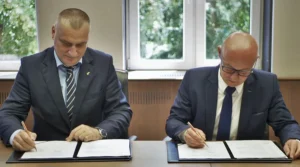What goes on in Poland on the 2nd of November.
Poland’s maximum plan for the atom is almost 12 GW
If it turns out that two parallel nuclear programs will be pursued in Poland – a government and a private one, up to 12 GW of this type of capacity could be created in cooperation with Westinghouse from the USA and KHNP from South Korea, which would confirm the earlier estimates of BiznesAlert.pl.
The Polish Nuclear Power Program – the so-called government program – provides for the construction of 6-9 GW of nuclear energy by 2043 with the first reactor by 2033. The government’s resolution scheduled for November 2 is to select a contractor, which, according to Prime Minister Mateusz Morawiecki’s declaration, will be the American Westinghouse. This would ultimately build six reactors, or about 6 GW of power.
The plan based on the letter of intent signed by Polska Grupa Energetyczna-ZE PAK and KHNP (from Korea) provides the construction of two units with a total capacity of 2.8 GW, with the possibility of doubling their number. This means the facility planned in Pątnów would reach 5,6 GW, and together with Westinghouse reactors, Poland’s nuclear capacity would reach 11,6 GW. These data are consistent with the estimates of BiznesAlert.pl from October.
The Baltic Pipe problem is set to disappear after a mysterious incident
As of the morning, it is possible to use the capacity of the Baltic Pipe entry at the Nybro terminal, which has experienced mysterious problems.
The nomination at the Nybro point, which connects the Baltic Pipe gas pipeline in Denmark with the Norwegian Europipe II, has been possible from 6 am Polish time on November 1st. This means that the problems with this receiving terminal have ended after a series of incidents of this type in the energy sector in the West.
The terminal in Nybro, Denmark, had unexplained IT problems. It could not be used to act as an intermediary in the supply of Norwegian gas via Denmark to Poland, so an alternative route was used via the Emden point in Germany, guaranteeing supplies at the available capacity. Now the gas can flow as originally planned. Interestingly, the day before, the Danes had lowered the alert level in the energy sector raised after the sabotage of the Nord Stream 1 and 2 gas pipelines, as well as numerous incidents in the Western energy sector, such as the blackout of Bornholm, the interruption of the SwePol Link power connection and more.









